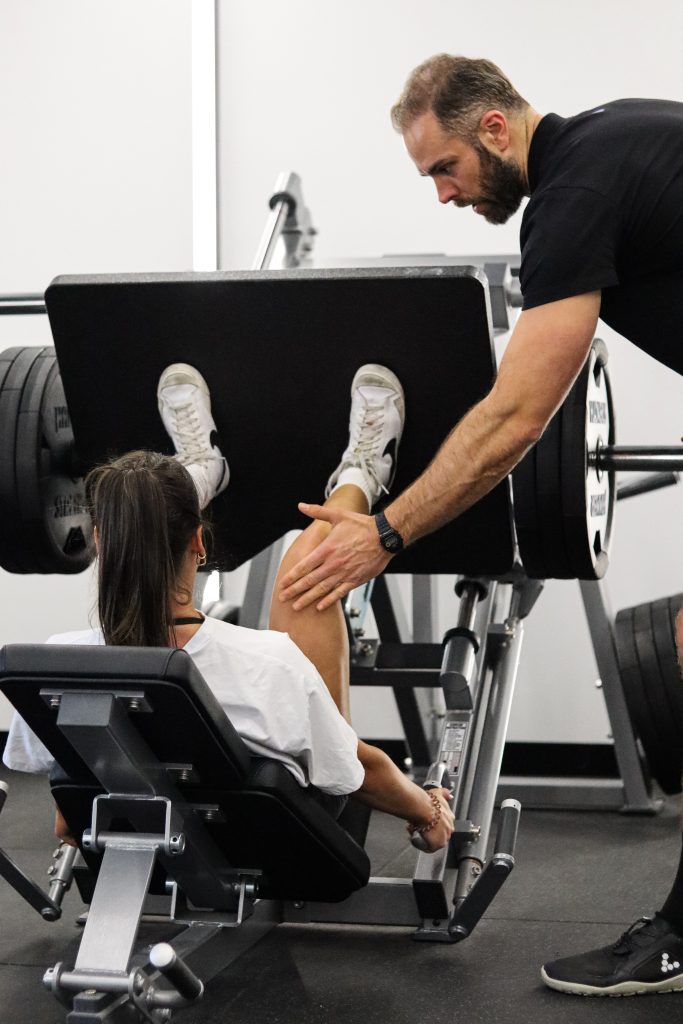What Every Athlete Should Know About How Strength Training Prevents Injury
By Luke WalkerDare Head Coach
Strength Training For Injury Prevention
Many individuals come to strength training as a way to stay fit, improve body composition and reach aesthetic goals. However, strength training is also great for athletes and everyday people who want to reduce their risk of injury.
Injuries can greatly impact our lives, affecting everything from physical appearance to mental health. When we strength train, we strengthen our muscles and bones so that they’re able to carry greater loads and reduce the risk of musculoskeletal injury.
In this guide, we’re explaining the science behind strength training for injury prevention and our top tips to train safely and stay injury-free.
How Can Strengthening Muscles Prevent Injury?
Strengthening the muscles can help prevent injury by building strength, improving joint stability and balance, increasing flexibility and reducing muscle fatigue.
Stronger muscles are more resistant to tears and strains and are more resilient to sudden changes. Additionally, stronger muscles can absorb shock better than weak ones, helping protect against falls and other sudden impacts.
Strengthening muscles also increases proprioception which is the body’s ability to sense where it is in space. Increased proprioception leads to better joint stability and control which reduces the risk of injury.

Strength Training For Injury Prevention – The Science
Don’t just take it from us though, here’s what the science says about strength training and injury prevention:
- Resistance training is beneficial for increasing bone strength, and muscular strength also appears to be positively related to bone mineral content and bone strength. Increased bone and muscle strength helps to reduce injuries.
- Increases in muscle mass are likely met by increases in the size and strength of the connective tissue. Strong connective tissue supports the muscle and assists with maintenance, repair, and modification of muscle groups that help avoid injury.
- Resistance training has an important role in reducing the risk for musculoskeletal injuries related to muscle imbalance, expressed as either an agonist to antagonist ratio (i.e., knee flexors/ knee extensors) or as a bilateral comparison (i.e., right and left knee flexors). Correction of the existing imbalance through a resistance training program is important to reducing the individual’s risk for muscle injury.
- Strength training reduces injuries associated with repetitive movement and overuse during sports. In recent studies increasing strength training volume and intensity were associated with sports injury risk reduction.
- Overall, research shows that almost all exercise-induced muscle damage can be decreased by completing regular strength training.
5 Tips To Strength Train For Injury Prevention
If you’re trying to use strength training as a method of injury prevention, here’s how to strength train safely.
Work On Your Weaknesses
We can all be guilty of only doing the exercises that we like, and often we like them because we’re good at them. This means that you could end up training shoulders and chest 3 days a week and your legs just once. Clearly, this will lead to an imbalance in the body.
Identifying your weaker areas and working to a program that covers all bases is the best way to build a strong, balanced body that will be the most resistant to injury.
Slowly Increase Weight
Progressive overload is a term that you’ll hear a lot in the world of strength training. It’s the only way to build muscle, and involves either upping your weight or producing more reps of said exercise.
However, there’s no need to up your weight too quickly or try to go too hard, too fast. Increasing your load slowly over time is the best way to strengthen the body and keep yourself injury-free.
Understand Your Goals and Limitations
Before beginning a strength training regimen, it’s important for athletes to first understand their goals and limitations. Without knowing what you want to accomplish and how much your body can handle, you can easily cause yourself an injury or stress your muscles too much. A personal trainer can help define realistic goals that are customised to your individual needs. Always start slow and progress slowly as you become more experienced.
Master Your Form First
An effective strength training program should involve exercises that target all major muscle groups. These exercises should be based on proper form and techniques that prevent you from overextending your muscles or risking injury.
Mastering the proper form of each exercise should be the top priority, as “Practice does not make perfect. Only perfect practice makes perfect”. Using the wrong form will only harm your body and increase your risk of injury, so be sure to work with a personal trainer, watch video tutorials and ask for help.
Work Muscle Groups In Different Ways
Often, athletes will continue to train in ways they’re comfortable with, utilising certain movements or groups of movements over others. However, it’s vital that your body learns to move in different planes of motion, using different strength exercises regularly.
By doing this, we build strength in the body across a variety of movements and allow the muscles and tendons to adapt to stress. The goal of strength training for injury is to improve the whole system coordination, ultimately enabling the body to take on greater stress without injury.
Every time we train muscles and tendons, new collagen is laid down in the directions we apply force. Therefore, the more movements, directions and variations we can master, the stronger and more injury-resistant our body will become.

Ready to upgrade your training regime?
If you’re feeling a little bit lost with your routine, or want to use strength training as a method of injury prevention, it’s always best to work with a personal trainer.
Contact us now to book your initial consultation and have a look round the studio. Alternatively, why not read up on our recent article on strength training for weight loss.
